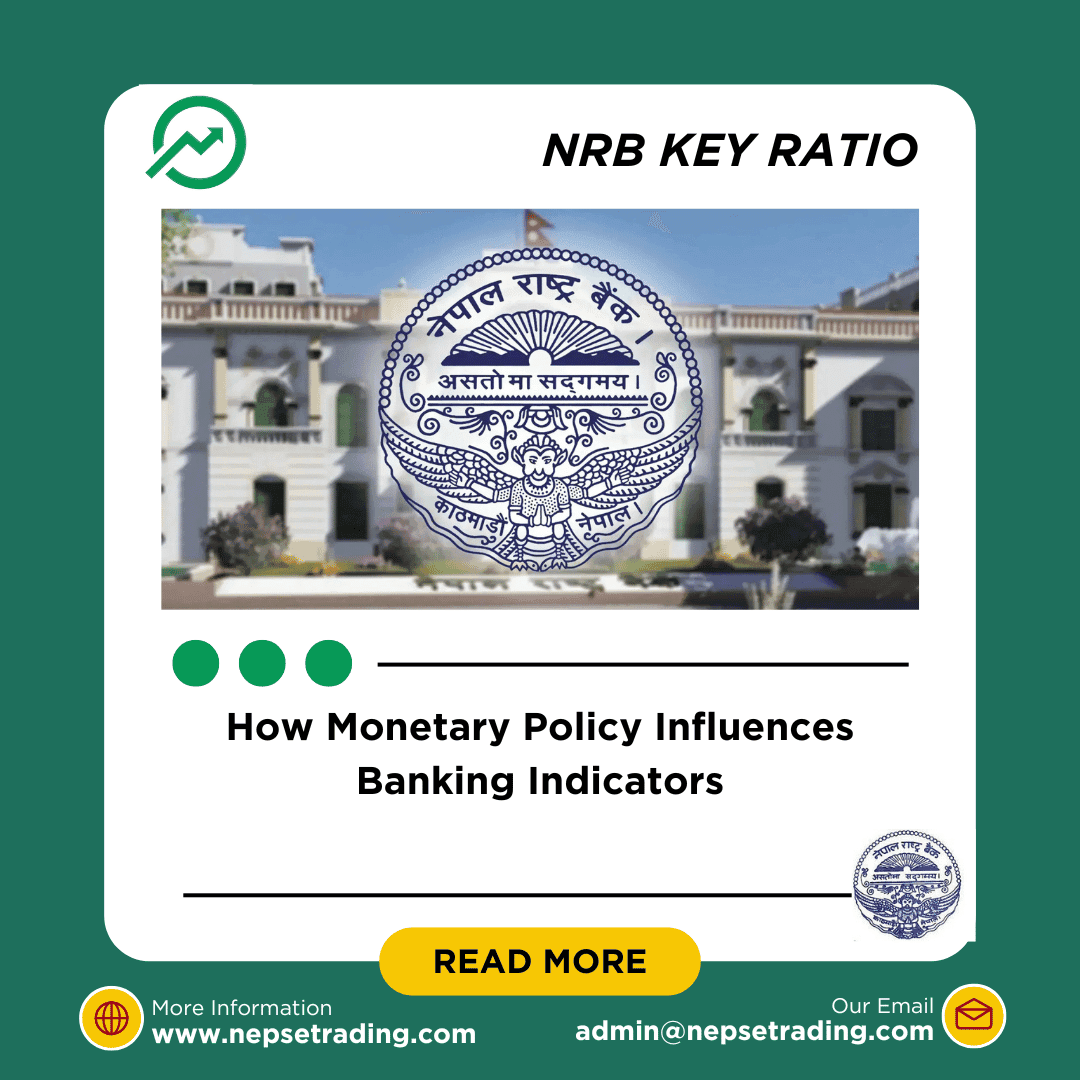By Sandeep Chaudhary
How Monetary Policy Influences Banking Indicators

Monetary policy, set by Nepal Rastra Bank (NRB), is one of the most powerful levers shaping the health of the banking sector. Every decision on interest rates, liquidity injections, and credit controls directly reflects in key banking indicatorslike Capital Adequacy Ratio (CAR), Credit-to-Deposit (CD) ratio, Non-Performing Loans (NPLs), base rate, and liquidity ratios.
When NRB adopts a tight monetary policy (restricting money supply, raising policy rates, or tightening credit), banks face higher deposit costs and slower loan growth. This pushes up their base rate and lending costs, making borrowing more expensive for businesses and households. As lending slows, banks often see improved liquidity buffers but rising stress in loan recoveries, which can increase NPL ratios. For example, in 2022/23, when NRB enforced strict credit controls, loan growth fell sharply while NPLs started climbing.
Conversely, during an expansionary monetary policy, when NRB cuts policy rates or injects liquidity through repo operations and reduced CRR (Cash Reserve Ratio), banks can lower their base rates, making credit more affordable. This boosts loan growth, increases CD ratios, and supports sectors like real estate, hydropower, and SMEs. However, aggressive credit expansion can also lead to future asset quality problems if borrowers cannot sustain repayments.
Monetary policy also influences capital adequacy (CAR/CCAR) indirectly. In a high credit growth environment, banks need to expand their capital base to meet regulatory buffers. If loan defaults rise due to policy-driven rapid credit expansion, provisioning eats into profits, lowering capital strength. Similarly, liquidity ratios (SLR and net liquidity)respond to policy shifts — a tightening stance forces banks to hold higher reserves, while easing allows them to deploy funds more aggressively.
For NEPSE investors, understanding this connection is crucial. Monetary policy acts as the “invisible hand” that determines banks’ profitability, dividend potential, and risk levels. When policy is tight, expect lower earnings but safer balance sheets; when it is loose, expect higher growth but more risks in asset quality.









